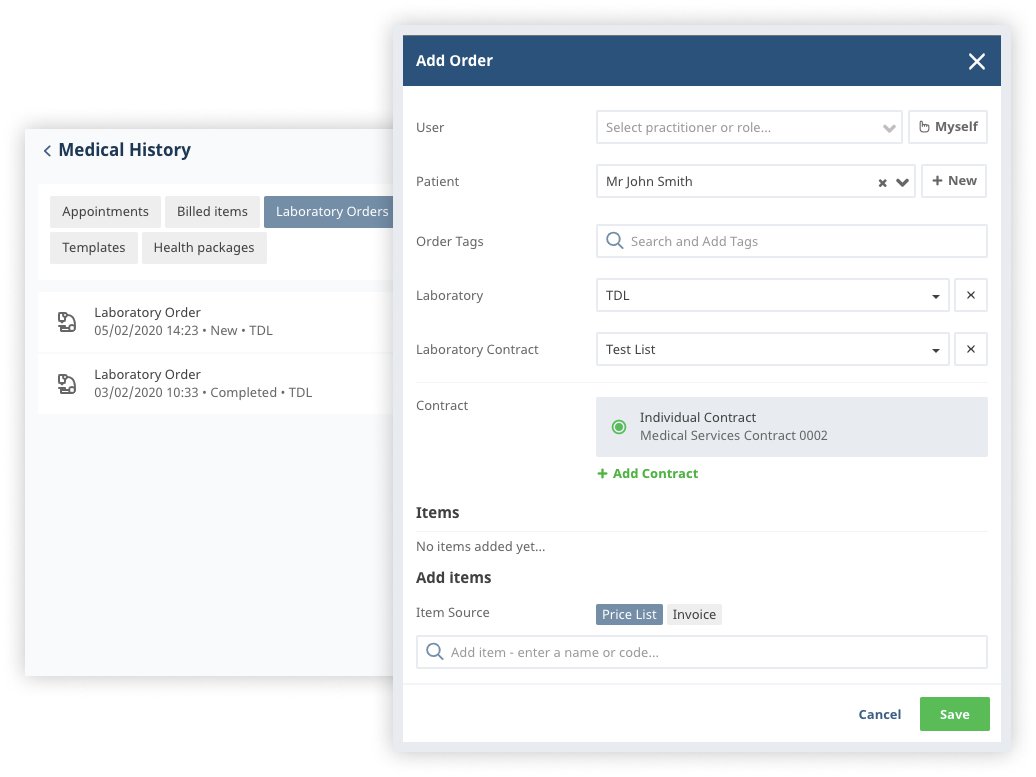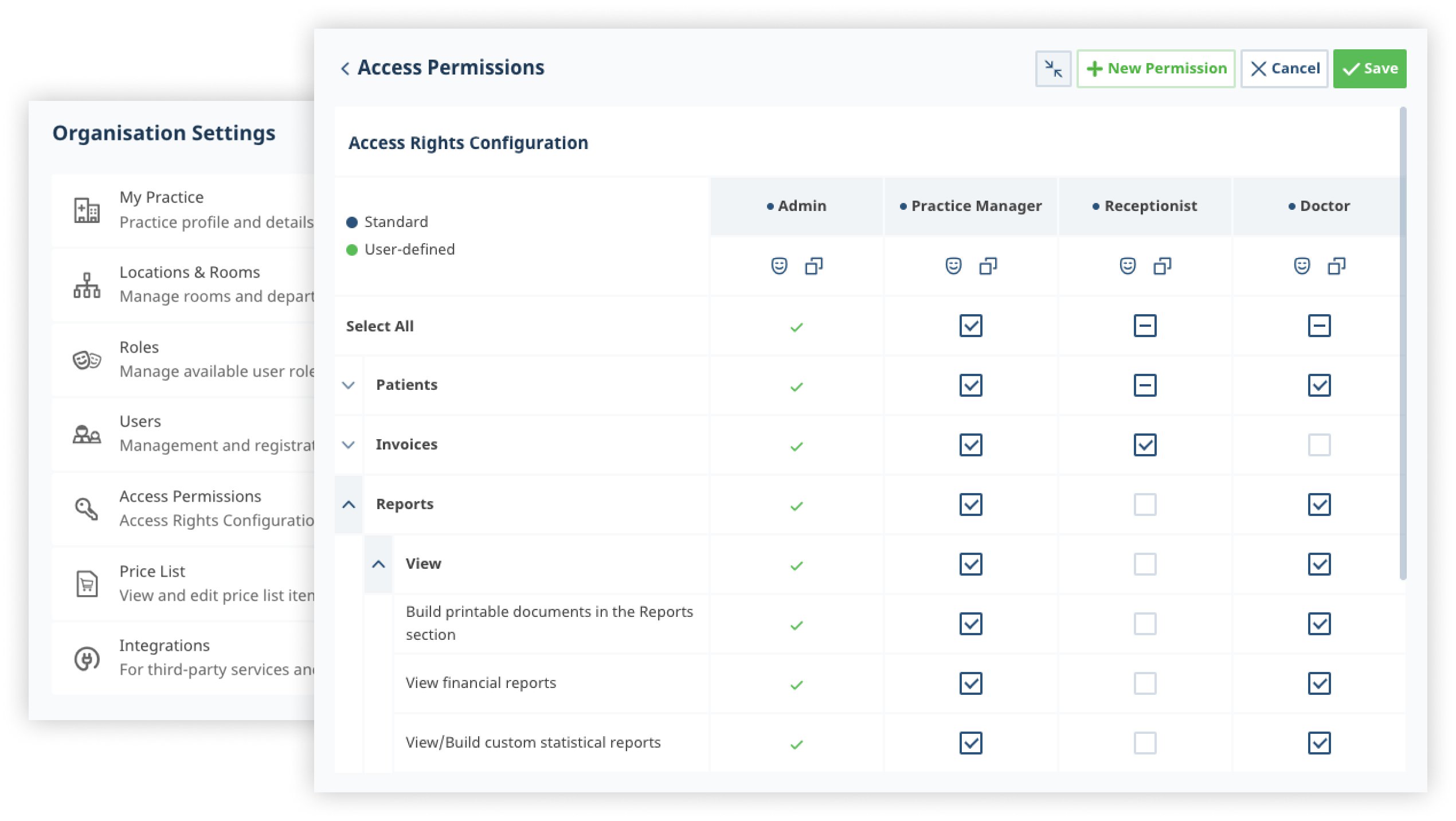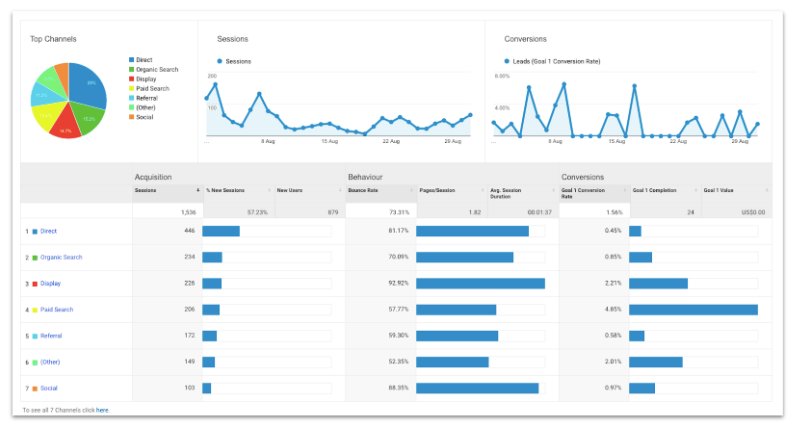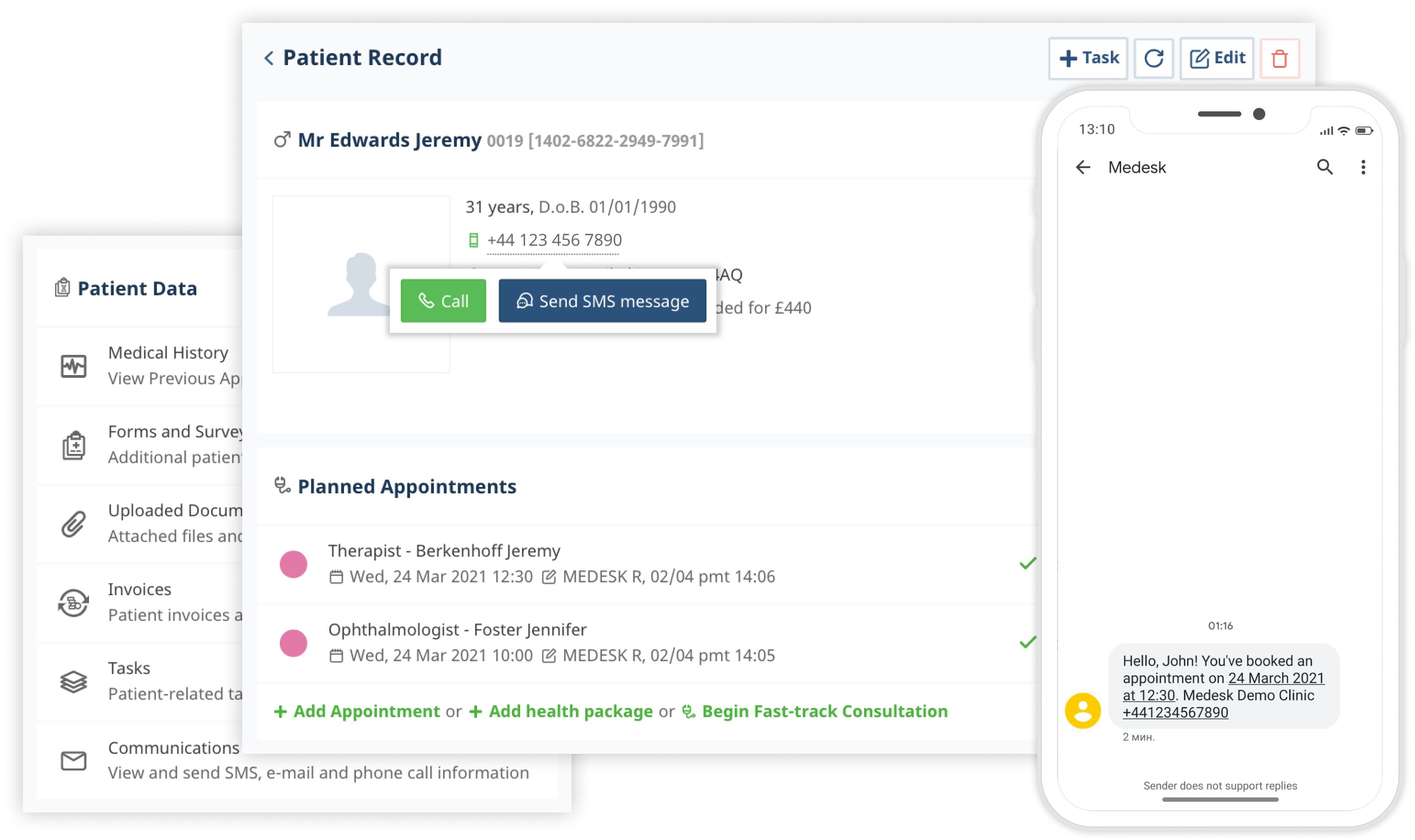In 2025, EHR interoperability is no longer optional — it’s the foundation for secure data exchange, coordinated care, and smarter decision-making. From FHIR APIs and cloud-based health systems to compliance with HL7 and HIPAA, the right tools solve the fragmentation that slows down care.
According to a 2024 NHS Digital report, poor interoperability costs the UK healthcare system over £1 billion annually due to redundant tests, administrative inefficiencies, and delayed treatments.
At Medesk, we help UK private clinics stay connected and compliant with an all-in-one EHR system designed for real-world interoperability—enabling seamless health information exchange between GPs, specialists, labs, and external partners.
In this guide, we explore the most effective EHR interoperability solutions for 2025 — comparing features, standards compliance, and practical results across top tools like Medesk, Epic, and Cerner.
Learn how to simplify your practice workflow and free up more time for patients with Medesk.
Open the detailed description >>What Is EHR Interoperability?
EHR interoperability refers to the ability of different healthcare information systems, software applications, and networks to exchange, interpret, and use patient data accurately and effectively. Simply put, it’s about enabling healthcare providers to access the right information at the right time—regardless of what system it’s stored in.
There are several layers of interoperability:
- Foundational: The basic ability to send and receive clinical data.
- Structural: Ensures that data can be organized and understood once received.
- Semantic: Allows different systems to interpret the data meaningfully, enabling true collaboration between healthcare providers.
But how exactly does it help clinics in their daily processes? Let's get this straight.
How Interoperability Helps Clinics Grow?
A decade ago, EHR interoperability was a "nice-to-have" feature. Today, it is a core requirement for any clinic that wants to:
- Deliver faster, more accurate diagnoses by eliminating fragmented patient records.
- Reduce administrative overhead caused by manual data entry and fax-based referrals.
- Comply with evolving regulations, including GDPR, HIPAA, and NHS Digital mandates.
- Improve satisfaction by offering seamless digital patient experiences.
1. Improved Patient Care
When patient data is readily available across systems, clinicians can make faster, more accurate diagnoses and treatment decisions. Interoperability reduces the risk of medical errors, redundant tests, and unnecessary referrals.
Imagine a scenario where a patient seen at a private clinic in London can have their previous test results instantly accessed from a hospital in Manchester. The doctor saves time, the patient gets better care, and no resources are wasted.
2. Increased Operational Efficiency
Interoperability eliminates the need for manual data entry, faxing, emailing, or scanning documents. This speeds up workflows, reduces administrative burdens, and helps staff focus on patient care.
For clinics in busy urban areas like London, Birmingham, or Manchester, where time is a premium, interoperable systems help save hours each week by automating data exchange.
Medesk helps automate scheduling and record-keeping, allowing you to recreate an individual approach to each patient, providing them with maximum attention.
Learn more >>3. Regulatory Compliance—Done
Healthcare regulations in the UK, EU, and globally increasingly demand that healthcare data be accessible and secure. Standards like HL7, FHIR, and GDPR mandate better data portability and privacy.
The Fast Healthcare Interoperability Resources (FHIR) standard, developed by HL7, has emerged as the leading framework for secure data exchange. Unlike older protocols, this interoperability standard uses RESTful APIs, making it easier for different EHR software to communicate in real time and exchange data.
Key advantages of FHIR-enabled EHRs like Medesk include:
- Structured data formatting, ensuring lab results, prescriptions, and clinical notes are interpreted correctly across systems.
- Granular access controls, allowing clinics to share only relevant data with external providers.
- Support for mobile and web apps, enabling patients to access their records via secure portals.
Clinics using Medesk’s FHIR-enabled modules reduced patient onboarding delays by 35%.
Meanwhile, HL7 v2 and CDA standards remain widely used for legacy integrations, but FHIR is now the preferred choice for new implementations—particularly in the UK and EU, where NHS Digital and the European Commission actively promote its adoption in 2025.
Using interoperable healthcare software ensures compliance, avoiding costly penalties and safeguarding your reputation.
4. Patient Satisfaction and Retention
Today’s patients are digitally savvy and expect the same level of service from their clinics as they get from other sectors. They want access to their electronic health records, appointment histories, and test results—often across multiple care providers.
With interoperability, your clinic can offer patients a seamless experience that boosts satisfaction and long-term loyalty.
What Are the Biggest Challenges in EHR Interoperability in 2025? (And How to Solve Them)
Challenge #1: Vendor Lock-In and Closed Ecosystems
Many large EHR vendors (e.g., Epic, Cerner) operate proprietary ecosystems, making it difficult for clinics to integrate with external systems without costly custom development. A 2024 survey by Black Book Research found that 68% of private clinics using legacy EHRs reported paying £20,000+ annually for third-party integration tools.
While many clinics struggle with legacy EHRs and slow integrations, Medesk simplifies real-time data sharing through open APIs and out-of-the box FHIR and HL7 support.
Medesk fully supports sending and receiving lab results via TDL and automatic SMS and email notifications and integrates seamlessly with Stripe, Healthcode and Xero so you can save time and money by working from the single interface.

Challenge #2: Silos and Inconsistent Data Formats
When clinics use multiple disconnected systems (e.g., one for scheduling, another for labs), critical patient data gets trapped in silos. A Manchester-based rheumatology clinic reported losing 15 hours per week manually reconciling mismatched lab results and EHR entries.
But there are some solutions to the problem:
- Consolidate systems under a unified EHR with native lab/imaging integrations.
- Enforce FHIR-based data structuring for all clinical documents.
- Implement automated validation tools to flag inconsistencies.
Challenge #3: Balancing Security with Accessibility
Strict GDPR and HIPAA regulations require airtight data protection, but clinics also need real-time access for care coordination. A 2025 EU HealthTech Audit revealed that 41% of breaches occurred due to clinicians using insecure workarounds (e.g., emailing unencrypted records).
Medesk offers role-based access controls (e.g., GPs see full histories, receptionists view only appointments) and tracks every data access attempt, so you can be sure that no unauthorised persons have read, downloaded or somehow misused your medical records.

Challenge #4: High Implementation Costs
Traditional EHR upgrades often require £50,000+ in consulting fees and 6–12 months of downtime. Smaller clinics struggle to justify the ROI but need interoperability as much as Epic and Cerner’s users. Here is where cloud-based platforms solve the challenge.
Subscription pricing starting from $32/month per provider makes secure data exchange between providers, labs, insurance companies, and other stakeholders possible and affordable. Moreover, phased rollouts can be used—start with core functionality (EMR, appointments), then add integrations that personally fit your healthcare organization needs.
Discover more about the essential features of Medesk and claim your free access today!
Explore now >>Challenge #5: Staff Resistance to Change
Clinics using paper-based systems or outdated software often face pushback from employees accustomed to legacy workflows. Gamified training with interactive tutorials and large learning centre databases shortens the onboarding time by up to 8 days, according to the Medesk internal research.
You can check the saved time via performance dashboards and reports:
"You’ve automated 82 lab requests this month."

Why Medesk Solves Interoperability in 2025
Medesk is more than just an appointment scheduler or billing tool—it’s a fully integrated solution designed to connect clinics to the wider healthcare ecosystem, whether you're a solo practitioner in Dublin, a multi-specialty clinic in Berlin, or a telehealth provider in London.

Here’s how Medesk supports EHR interoperability:
→ Seamless Integrations with Third-Party Systems. Whether you’re sending lab results to a partner diagnostic center or receiving patient notes from a GP, Medesk ensures the data flows smoothly in both directions.
Support for Global Standards (HL7, FHIR, GDPR). Medesk is built on international standards like HL7 and FHIR, ensuring compatibility with other healthcare systems and facilitating secure, standardized data exchange.
The platform is also fully compliant with GDPR, meaning your patients' health data is protected to the highest EU standards.
![[en] healthcode int](/i/7zZJyL2KA8YORBzFg41xgG/49932b40f8b34a8ce635d6baaa389605/healthcode__4_.png)
→ API Access for Custom Integrations. Need to build a custom workflow or integrate with a niche platform? Medesk offers flexible API access that allows developers to build secure, reliable interfaces tailored to your clinic’s needs.
This is especially helpful for larger clinics or healthcare startups operating in competitive regions like central London or Edinburgh, where unique business models require tailored tech solutions.
Clinics using Medesk report a 35% reduction in patient onboarding time, fewer lab sync errors, and improved continuity of care.
→ Cloud-Based and Scalable. Medesk is a cloud-based system, meaning there’s no hardware to maintain and updates happen automatically. It’s also scalable—ideal for growing clinics looking to expand without the headache of changing systems.
Many clinics across the UK and Europe have already made the switch to Medesk and are reaping the benefits of true interoperability.

Interoperability is no longer optional. Healthcare providers who invest in connected systems today are better positioned to:
- Comply with evolving regulations.
- Offer competitive, patient-friendly services and better quality of care.
- Operate more efficiently and profitably.
- Expand into new regions and markets with confidence.
With a user-friendly interface, robust interoperability features, and expert support, Medesk helps you:
- Connect with the wider healthcare industry network.
- Deliver faster, better, more personalized care and health outcomes.
- Future-proof your clinic against regulatory and tech changes.
Take the Next Step Toward Interoperability
Ready to improve patient outcomes, streamline your operations, and stay ahead of the competition?
Start your free trial of Medesk today to see how interoperability can transform your practice.
Your patients deserve seamless care. Your clinic deserves Medesk.
FAQs
→ What is EHR interoperability and why does it matter?
EHR interoperability refers to the ability of electronic health record systems to share data and patient information securely between different providers, improving care quality and reducing delays.
→ What’s the difference between HL7 and FHIR?
HL7 v2 is the legacy standard using text-based messages (good for lab systems), while FHIR uses modern API technology with JSON/XML formatting – making it 5x faster for real-time data sharing.
→ Which solutions improve EHR interoperability in 2025?
Top solutions include FHIR-compliant APIs, HL7 data structuring, cloud-native EHRs, and platforms like Medesk that support multi-system integrations.
→ Is Medesk compliant with UK and international standards?
Yes—Medesk supports HL7, FHIR, and meets NHS interoperability requirements while ensuring HIPAA and GDPR compliance.
→ How long does EHR implementation take?
Cloud-based systems like Medesk typically go live in 2-4 weeks (vs 6-12 months for traditional EHRs). Our fastest clinic deployment was 8 days for a 5-GP practice using pre-built FHIR templates.


